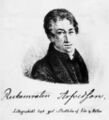Template:Selected anniversaries/October 28: Difference between revisions
No edit summary |
No edit summary |
||
| Line 2: | Line 2: | ||
File:Antoine Deparcieux.jpg|link=Antoine Deparcieux (nonfiction)|1703: Mathematician and engineer [[Antoine Deparcieux (nonfiction)|Antoine Deparcieux]] born. He will make a living manufacturing sundials. | File:Antoine Deparcieux.jpg|link=Antoine Deparcieux (nonfiction)|1703: Mathematician and engineer [[Antoine Deparcieux (nonfiction)|Antoine Deparcieux]] born. He will make a living manufacturing sundials. | ||
||1704: John Locke dies ... physician and philosopher. Pic. | ||1704: John Locke dies ... physician and philosopher. Pic. | ||
| Line 74: | Line 72: | ||
||2009: NASA successfully launches the Ares I-X mission, the only rocket launch for its later-cancelled Constellation program. | ||2009: NASA successfully launches the Ares I-X mission, the only rocket launch for its later-cancelled Constellation program. | ||
||2014: An unmanned Antares rocket carrying NASA's Cygnus CRS Orb-3 resupply mission to the International Space Station explodes seconds after taking off from the Mid-Atlantic Regional Spaceport in Virginia. | ||2014: An unmanned Antares rocket carrying NASA's Cygnus CRS Orb-3 resupply mission to the International Space Station explodes seconds after taking off from the Mid-Atlantic Regional Spaceport in Virginia. | ||
Revision as of 13:38, 7 February 2022
1703: Mathematician and engineer Antoine Deparcieux born. He will make a living manufacturing sundials.
1841: Chemist and academic Johan August Arfwedson dies. Arfwedson discovered the element lithium in 1817 by isolating it as a salt.
1892: Charles-Émile Reynaud performs the first of his Pantomimes Lumineuses shows in Paris using his animated film projection system, the praxinoscope.
1919: Mathematician and academic Gerhard Ringel born. Ringel will be a pioneer of graph theory and contribute significantly to the proof of the Heawood conjecture (later the Ringel-Youngs theorem), a mathematical problem closely linked with the Four color theorem.
2005: Chemist and academic Richard Smalley dies. Along with colleagues Robert Curl and Harold Kroto, he was awarded the 1996 Nobel Prize in Chemistry for the discovery of a new form of carbon, buckminsterfullerene, also known as buckyballs.




